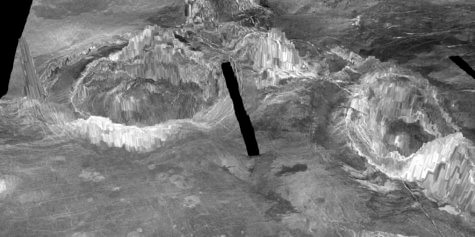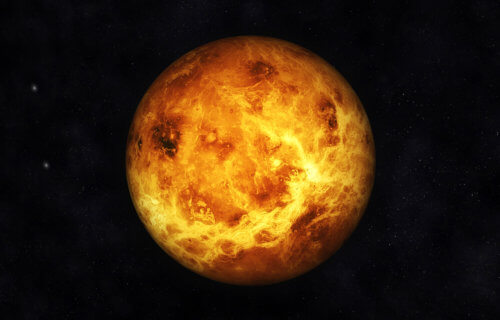COLLEGE PARK, MD — Our solar system is billions of years old. While most of the Earth’s neighbors are believed to be cold, dormant worlds, a surprise has been discovered on Venus. Researchers at the University of Maryland say the planet many thought was dead actually has dozens of still-active volcanoes rumbling under the surface.
Geology professor Laurent Montési says Venus has a much younger surface than planets Mars and Mercury, which have cold and hardened interiors. Despite being younger, scientists thought the fresher rock formations were caused by antient geologic activity. The new study paints a very different picture of the second planet.
“This is the first time we are able to point to specific structures and say ‘Look, this is not an ancient volcano but one that is active today, dormant perhaps, but not dead,'” Montési says in a university release. paper. “This study significantly changes the view of Venus from a mostly inactive planet to one whose interior is still churning and can feed many active volcanoes.”
How Venus’ volcanoes show they’re still active

Researchers say these volcanoes form ring-like structures that are visible throughout the surface of the planet. After plumes of hot material rise up to the mantle and surface crust, the material cools and forms ring-like structures called coronae. This is very similar to the way the volcanic islands of Hawaii formed.
Working with the Institute of Geophysics at ETH Zurich, researchers are using new mathematical models to map Venus’ thermo-mechanic activity. This helps them make 3D simulations of coronae forming beneath the surface. The more detailed information reveals there’s an abundance of activity happening under the surface.
“The improved degree of realism in these models over previous studies makes it possible to identify several stages in corona evolution and define diagnostic geological features present only at currently active coronae,” explains Montési. “We are able to tell that at least 37 coronae have been very recently active.”
Exploring Earth’s suddenly lively neighbor
The study finds there are coronae hotspots scattered around a handful of locations on the planet. As astronauts set their sights on Mars, it’s Venus that’s proving to be a home for future discovery.
The authors say the volcano spots give clues on where upcoming space missions can land equipment to examine the surprisingly active interior. Europe’s EnVision mission plans to explore Venus in the year 2032.
The paper is published in Nature Geoscience.
